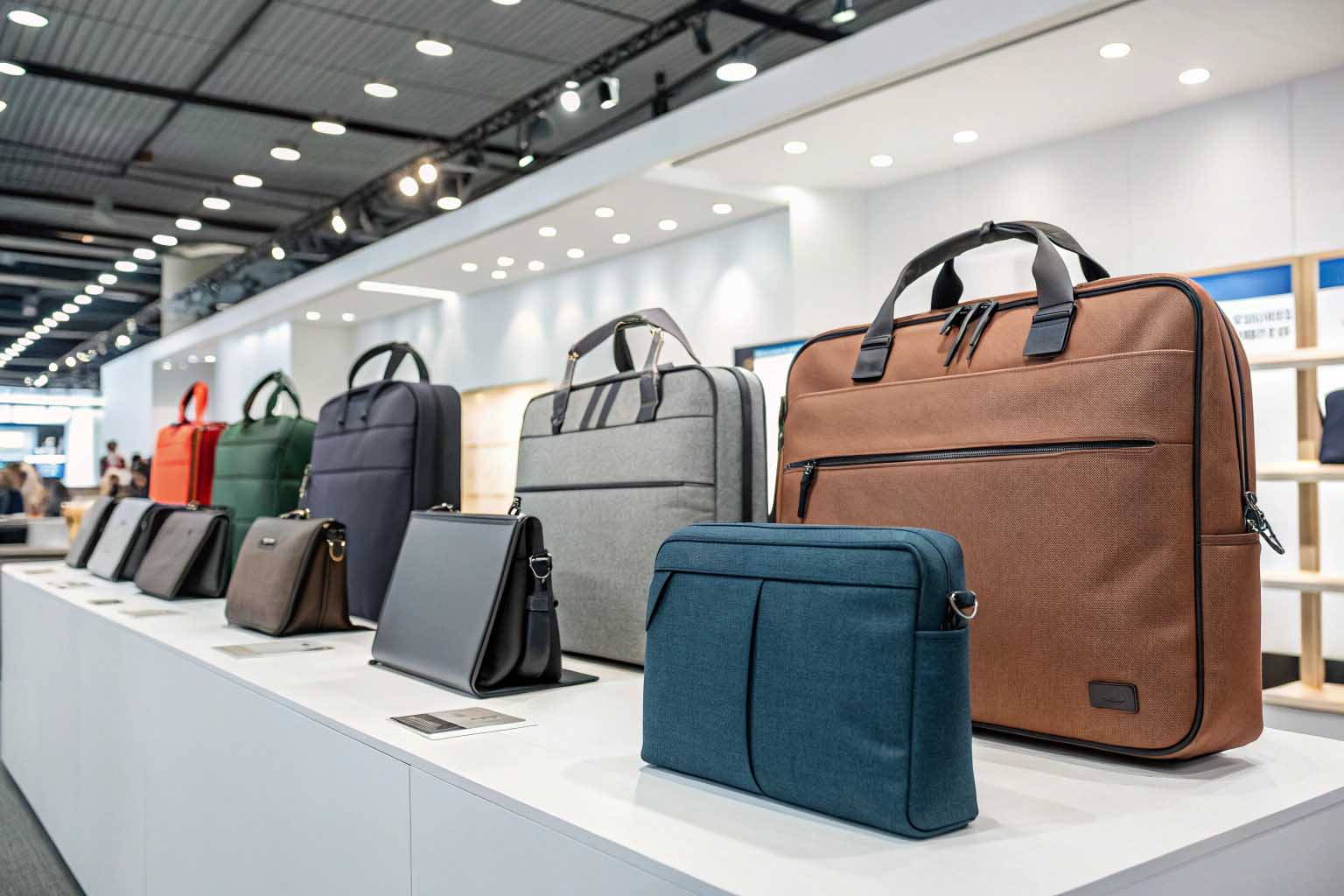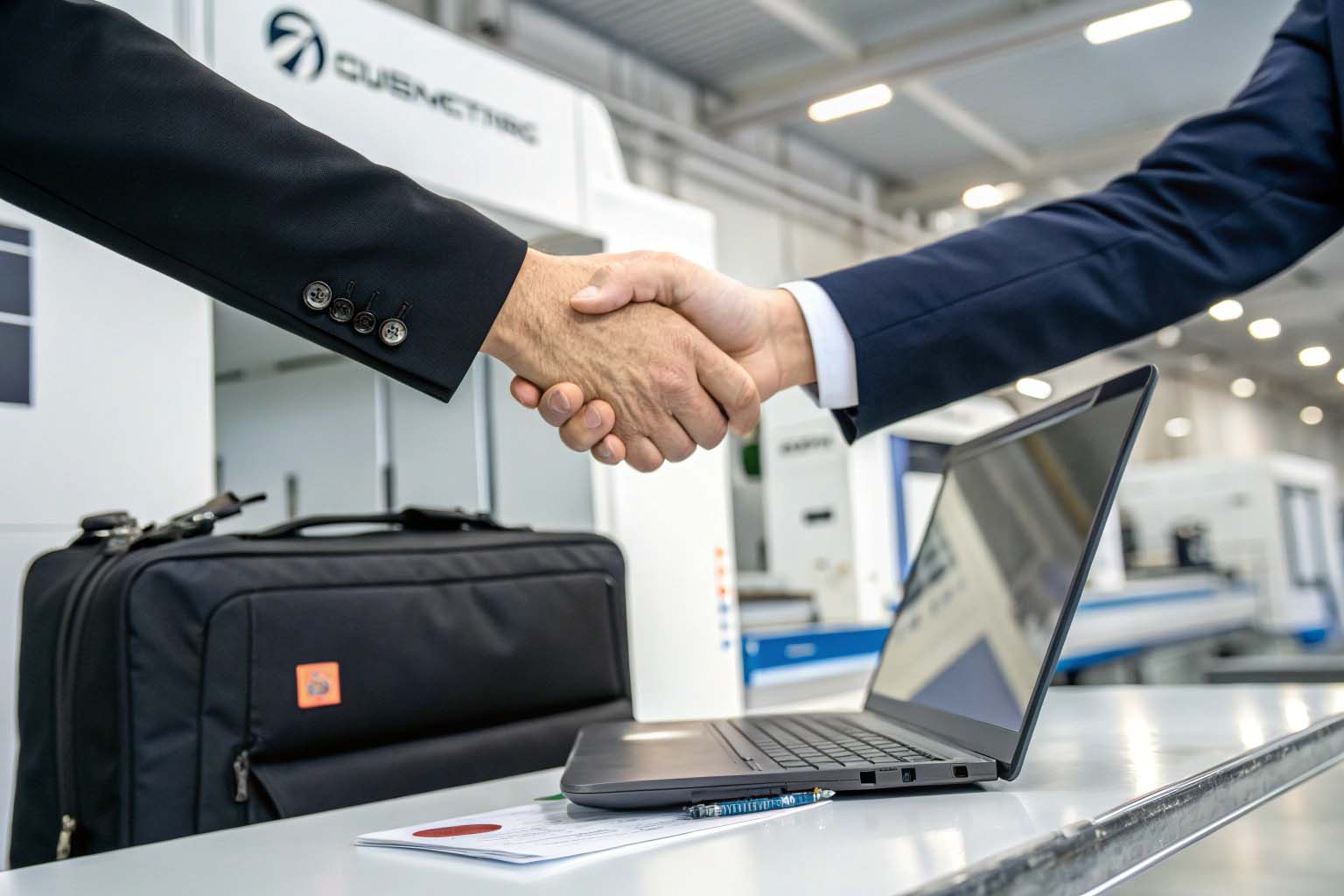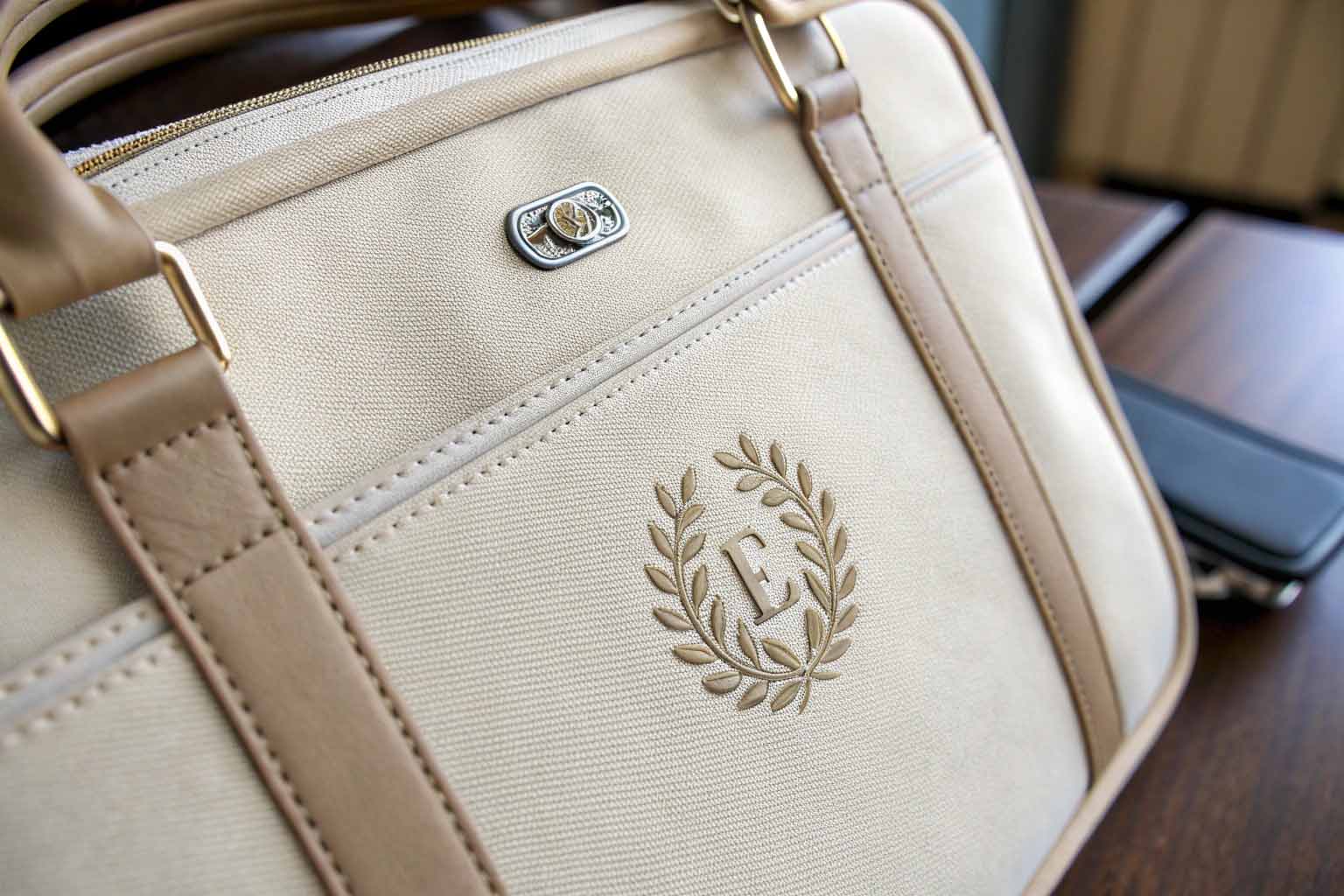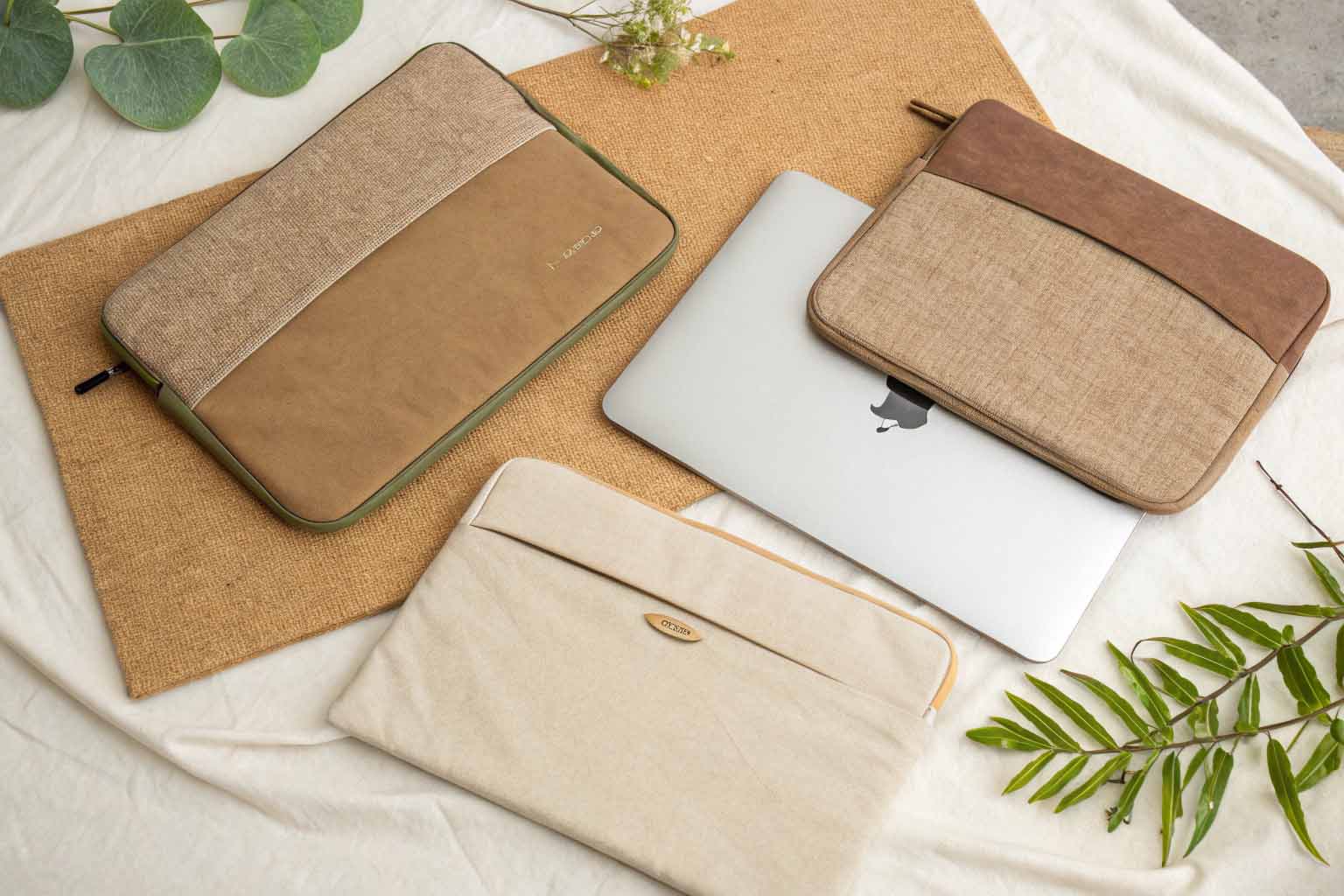Need custom laptop bags but overwhelmed by choices? Finding the right supplier, whether local or overseas, can feel daunting. I’ll guide you through reliable options for your business needs.
You can buy custom bolsas para portátiles from local print shops or promotional product companies, or directly from overseas manufacturers, often based in China. Overseas manufacturers usually offer more customization options and better pricing due to strong supply chains, handling both small and large orders effectively.

Finding the right place to buy is just the first step. You probably have more specific questions about the process, like how to actually get your logo on the bags, what the minimum order might be, and how to ensure you’re working with someone reliable. Let’s break down these common questions one by one.
How do I order custom laptop bags with my company logo?
Want your logo perfectly placed on laptop bags? The ordering process can seem complicated with artwork files and approvals needed. I’ll simplify the steps for you, drawing on my years of experience.
Ordering involves choosing a bag style, providing your logo artwork (usually a vector file like .AI or .EPS), approving a digital mock-up or physical sample, and confirming production details like quantity and delivery time. Clear communication with your supplier is essential.

Let’s dive deeper into making the ordering process smooth. Getting your logo onto a laptop bag involves a few key stages, and understanding them helps avoid mistakes. Whether you need light customization on existing styles or a fully unique design, the basics are similar.
Artwork Requirements
First, you need the right file format for your logo. Most manufacturers prefer vector files (like Adobe Illustrator .AI or .EPS files). Why? Because vector files can be resized infinitely without losing quality or becoming blurry. If you only have a JPG or PNG, ask your supplier if they can work with it or if they offer a service to convert it (sometimes called vectorization). Provide Pantone color codes if specific colors are critical for your brand.
The Proofing Stage
Before full production begins, you’ll almost always get a ‘proof’. This is usually a digital image showing how your logo will look on the bag – its size, position, and colors. For larger or more complex orders, especially fully custom ones, requesting a physical pre-production sample is a good idea. Check the proof or sample carefully! This is your last chance to catch errors in placement, spelling, or color before hundreds or thousands are made.
Communication is Crucial
Keep lines of communication open with your supplier. Confirm lead times (how long production takes) and shipping estimates. Understand their payment terms. Don’t hesitate to ask questions. A good supplier will be responsive and guide you through the process. Remember, overseas communication might involve time zone differences, so plan accordingly.
Here’s a typical workflow:
| Paso | Action Required | Key Consideration |
|---|---|---|
| 1. Choose Bag | Select style, material, color | Fits budget and purpose? |
| 2. Submit Artwork | Provide vector logo file (.AI, .EPS), Pantone codes | Is the format correct? |
| 3. Review Proof | Check digital mock-up or physical sample | Approve size, placement, colors? |
| 4. Confirm Order | Agree on quantity, price, lead time, shipping | Are all details clear? |
| 5. Production | Manufacturer produces the bags | Allow for stated lead time |
| 6. Shipping | Bags are shipped via agreed method | Track shipment |
What’s the minimum order quantity (MOQ) for branded laptop sleeves?
Worried about ordering too many bags or sleeves? High Minimum Order Quantities (MOQs) can tie up cash and storage space. Let’s explore typical minimums and how you might find flexible options.
Minimum order quantities (MOQs) vary widely. Local suppliers might offer lower MOQs (sometimes under 50), while overseas factories often range from 200-500 for stock items with simple branding, to 500+ for fully custom designs requiring new materials or molds. Always ask potential suppliers directly.

Understanding MOQs is important for budgeting and planning. They aren’t arbitrary numbers; they reflect the economics of production. Let’s look at why they exist and what influences them.
Why Do MOQs Exist?
Setting up production involves costs: preparing machinery, ordering materials (which suppliers often sell in bulk), and allocating labor. Manufacturers need to produce a certain number of items to cover these setup costs and make the production run viable. Printing or embroidering logos also has setup steps. Producing just one or two custom items would be extremely expensive per piece.
Factors Affecting MOQ
Several things influence a supplier’s MOQ:
- Supplier Type: Local promotional companies might aggregate small orders or use simpler methods, allowing lower MOQs but often at a higher price per unit. Overseas factories, geared for volume, usually have higher MOQs but lower unit costs.
- Customization Level: Adding a logo to a standard, in-stock bag (like the semi-finished stock I mentioned earlier) often has a lower MOQ (maybe 200-500 pieces). Creating a completely custom design with unique materials, colors, or shapes requires more setup and material sourcing, leading to higher MOQs (often 500+).
- Materials: Some specialized or eco-friendly materials might have higher minimum purchase requirements from the material suppliers themselves, impacting the final product’s MOQ.
Finding Low MOQ Options
If you need a smaller quantity:
- Ask about Stock Items: See if the supplier has suitable stock bags they can brand for you. This is often the fastest and lowest-MOQ route, especially overseas.
- Check Local Suppliers: They might cater to smaller orders, though the per-item cost could be higher.
- Negotiate (Carefully): Sometimes, especially if you’re a potential long-term customer, a supplier might be slightly flexible on MOQ, perhaps for a higher unit price.
- Consider Group Buys: If others in your network have similar needs, pooling orders might meet a higher MOQ.
| Scenario | Typical MOQ Range (Overseas) | Customization Level | Notas |
|---|---|---|---|
| Stock Bag + Logo Print | 200 | Light | Uses existing inventory, faster |
| Stock Bag + Embroidery | 300 – 500 | Light | Embroidery setup can influence MOQ |
| Custom Color/Material | 500+ | Medio | Depends on material availability |
| Fully Custom Design | 1000+ | Deep | Requires new patterns, possibly molds |
How can I find a trusted custom laptop bag manufacturer?
Need a reliable manufacturer but scared of getting poor quality or even scammed? Choosing the wrong partner costs time, money, and reputation. I’ll share my practical tips for finding trustworthy suppliers.
Find trusted manufacturers through online B2B platforms (like Alibaba, Made-in-China, Global Sources), industry trade shows, referrals from colleagues, or specialized sourcing agents. Always verify their credentials, check reviews/references, and ask for samples before committing to a large order.

Finding a good manufacturer, especially overseas, requires due diligence. It’s not just about finding someone who puede make bags, but finding someone reliable, communicative, and capable of meeting your quality standards. Here’s how I approach it:
Where to Look
- Online B2B Marketplaces: Sites like Alibaba, DHGate, Made-in-China, and Global Sources list thousands of manufacturers. Look for suppliers marked as "Verified," "Gold Supplier," or similar, but remember this is just a starting point. Read profiles carefully.
- Industry Trade Shows: Events focused on promotional products, gifts, or specific industries (like tech or education) often have bag manufacturers exhibiting. Meeting face-to-face builds trust.
- Referrals: Ask colleagues or contacts in your industry if they can recommend a manufacturer they’ve had good experiences with.
- Sourcing Agents/Companies: For complex projects or if you lack experience, a reputable sourcing agent based in the manufacturing country can help find and manage suppliers, but this adds cost.
Key Vetting Steps
Once you have a shortlist, dig deeper:
- Check Credentials: Ask for their business license, export license, and any relevant factory certifications (like ISO 9001 for quality management, or BSCI/SA8000 for social compliance). A legitimate company will readily provide these.
- Assess Communication: How quickly and clearly do they respond to your inquiries? Are they professional? Poor communication early on is a major red flag.
- Request Samples: Ask for samples of similar bags they’ve produced. Assess the quality of materials, stitching, zippers, and printing/embroidery. Expect to pay for samples and shipping.
- Read Reviews & Ask for References: Look for online reviews or case studies. Ask the supplier for references from previous clients, preferably in your country or industry.
- Virtual Tour/Audit: Ask if they can provide a virtual factory tour via video call. For large orders, consider a third-party factory audit.
Señales de alarma
Be cautious if a supplier:
- Has very poor communication or unprofessional emails.
- Offers prices significantly lower than competitors (could indicate low quality or a scam).
- Is unwilling to provide credentials or samples.
- Pressures you for large upfront payments without clear terms or proofs.
- Has no online presence or verifiable history.
Trust your gut. If something feels off, it probably is. It’s better to spend more time vetting than to regret a bad partnership later.
Which printing/embroidery techniques last longest on laptop bags?
Want your company branding to look sharp and professional for a long time, not peel off or fade after a few uses? Choosing the wrong decoration technique can waste your investment. Let’s look at durable options suitable for typical laptop bag materials.
Embroidery generally offers the best durability and a premium look for logos on fabric laptop bags like those made of polyester, canvas, or nylon. For printing, high-quality screen printing or well-applied heat transfers can also be very durable, depending on the material and usage.

The longevity of your branding depends on the technique used, the quality of its application, the bag material, and how the bag is used. Here’s a breakdown of common methods:
Embroidery Explained
Embroidery uses thread stitched directly into the fabric.
- Pros: Extremely durable (lasts as long as the fabric), looks high-quality and professional, good for simpler logos and text.
- Contras: Can be more expensive than printing, especially for large or complex designs with many colors. Not suitable for very fine details or gradients. Can slightly pucker thin fabrics. Works best on sturdy materials like polyester canvas, cotton canvas, or nylon.
Printing Methods Compared
- Screen Printing: Ink is pushed through a mesh screen onto the fabric.
- Pros: Very durable if done with quality inks and properly cured (heated). Cost-effective for larger quantities with limited colors. Good for bold, solid color designs.
- Contras: Setup costs can make small runs expensive. Each color requires a separate screen. Not ideal for photographic images or gradients.
- Heat Transfer (Vinyl or Digital): The design is printed onto a special transfer material, then applied to the bag using heat and pressure.
- Pros: Excellent for complex, multi-color, or photographic designs. Can achieve fine detail. Can be cost-effective for smaller runs.
- Contras: Durability varies greatly depending on the quality of the transfer material and application. Lower quality transfers can crack, peel, or fade over time, especially with washing or abrasion.
- Direct-to-Garment (DTG) / Digital Printing: Ink is printed directly onto the fabric, like an inkjet printer on paper.
- Pros: Great for highly detailed, full-color images. No setup costs per color. Soft feel on the fabric.
- Contras: Generally less durable than screen printing or embroidery, especially on synthetic fabrics like polyester often used for laptop bags. Can be more expensive per item. Best suited for cotton or cotton blends.
Material Matters
The bag material itself affects which method works best and lasts longest.
- Polyester/Nylon (Common for laptop bags): Embroidery and screen printing are usually very durable. High-quality heat transfers can work well.
- Canvas (Cotton or Poly-Cotton): All methods can work, but embroidery and screen printing often offer the best longevity. DTG works well on cotton.
- Neoprene (Common for sleeves): Screen printing or specialized heat transfers are typically used. Embroidery is usually not suitable.
For maximum lifespan, especially on standard polyester bags, I generally recommend bordado for a premium, long-lasting result, or quality screen printing for durable, cost-effective branding.
Are there sustainable options for eco-friendly laptop sleeves?
Want to choose custom laptop bags or sleeves that align with your company’s sustainability goals, but unsure what options are genuinely eco-friendly? Greenwashing is common, so it’s important to know what to look for.
Yes, absolutely! Sustainable options include laptop sleeves made from recycled materials (like rPET from plastic bottles), natural fibers (organic cotton, hemp, linen, cork), or innovative bio-based materials. Look for relevant certifications and ask suppliers about their sourcing and production practices.

Choosing sustainable options is becoming increasingly important for many businesses. Thankfully, the range of eco-friendlier materials for bags and sleeves is growing. Let’s explore some popular choices and what makes them sustainable.
Popular Eco-Materials
- Recycled PET (rPET): Made from post-consumer plastic bottles. This diverts plastic from landfills and oceans and uses less energy than producing virgin polyester. It’s durable and water-resistant, making it great for laptop bags.
- Organic Cotton: Grown without synthetic pesticides or fertilizers, reducing environmental impact and water pollution compared to conventional cotton. Often feels softer. Requires significant water to grow.
- Hemp: A fast-growing plant requiring minimal water and pesticides. Produces strong, durable fibers suitable for bags.
- Cork: Harvested from the bark of cork oak trees without harming the tree. It’s lightweight, water-resistant, and naturally antimicrobial. Has a unique aesthetic.
- Recycled Cotton/Polyester Blends: Uses pre-consumer (factory scraps) or post-consumer waste fabrics, reducing landfill and the need for virgin materials.
- Jute: A natural fiber, biodegradable and strong, often used for more rustic-looking bags.
Understanding Certifications
Certifications help verify claims:
- GRS (Global Recycled Standard): Verifies recycled content and socially/environmentally responsible production. Key for rPET or recycled cotton.
- GOTS (Global Organic Textile Standard): Ensures the organic status of textiles, from harvesting raw materials to environmentally and socially responsible manufacturing. Key for organic cotton.
- Fair Trade Certified: Focuses on ethical treatment and fair wages for workers involved in production.
- OEKO-TEX Standard 100: Tests for harmful substances in textiles. While not strictly ‘eco-friendly’, it ensures product safety.
Beyond Materials: Ethical Production
True sustainability also includes how the product is made. Ask suppliers about:
- Factory Conditions: Do they have social compliance audits (like BSCI or SA8000) ensuring fair labor practices?
- Water/Energy Use: Do they have initiatives to reduce water and energy consumption during manufacturing and dyeing?
- Waste Reduction: Are they minimizing fabric waste during cutting?
When requesting eco-friendly options, be specific about the materials or certifications you prefer. A good supplier should be able to provide details and evidence of their sustainable practices.
| Material | Key Eco-Benefit | Common Certifications | Considerations |
|---|---|---|---|
| rPET | Uses recycled plastic, less energy | GRS | Quality can vary |
| Algodón orgánico | No pesticides/fertilizers | GOTS | High water usage |
| Cáñamo | Low water/pesticide use, durable | None specific widely | Can be coarser |
| Cork | Renewable harvest, biodegradable | FSC (for forest mgmt) | Can be more expensive |
| Yute | Biodegradable, strong natural fiber | None specific widely | Rustic appearance |
Conclusión
Sourcing custom laptop bags involves choosing suppliers, understanding MOQs, finding trusted partners, picking durable branding methods, and exploring sustainable options. With the right information, you can confidently order great bags.


